Top 10 Animals With the Longest Lifespan on Earth
♦ Top 10 Animals With Shortest Lifespan On Earth
♦ Top 20 Weirdest and Rarest Animals In The World - In Danger of Extinction
 |
| Longest Living Animals On Earth - Photo KnowInsiders |
| Contents |
Humans can live for up to 100 years, but this is still a very short period of time when compared to the hundreds or millennia that some animals can live, and some animals can even slow down or stop aging.
Why Do Some Animals Live for so Long?
It's not entirely unheard of for a marine animal to live for a thousand years—or possibly even forever. Meanwhile, a human would be lucky to make it to 100. The secret to longevity, it turns out, is a combination of immobility and slow growth rate.
Add a deep-sea environment to the mix and you have an organism that is practically immortal.
Terrestrial animals generally have shorter lifespans than marine animals. One reason is because the ocean is a stable environment, and the deeper you go, the less likely you are to die from a chance event.
Top 10 Longest Living Animals On Earth
1. Immortal Jellyfish: More Than 700 Million Years
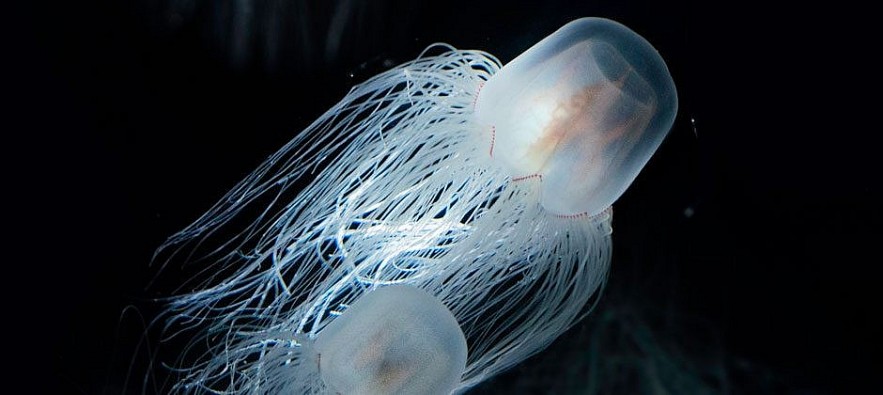 |
| Photo BBC |
The nutricula of Turritopsis It is well known that jellyfish can regenerate after harm or aging. As a result, they are described as being "biologically immortal."
They have spent more than 700 million years cruising the seas and oceans. In typically, jellyfish have a lifespan of up to 20 years. They float freely, using their bell, which resembles a jelly, to move, and their tentacles to ensnare prey. Despite some being safe for humans, some have lethal toxin.
2. Hydra-potentially Immortal: Live Forever
Hydra is a group of small invertebrates with soft bodies that look a bit like jellyfish. Like Turritopsis dohrnii, Hydras also have the potential to live forever. Hydras don’t show signs of deteriorating with age, Live Science previously reported.
These invertebrates are largely made up of stem cells, which continually regenerate through duplication or cloning. Hydras don’t live forever under natural conditions because of threats like predators and disease, but without these external threats, they could be immortal.
3. Glass sponge: Life Span of 10,000 Years or More
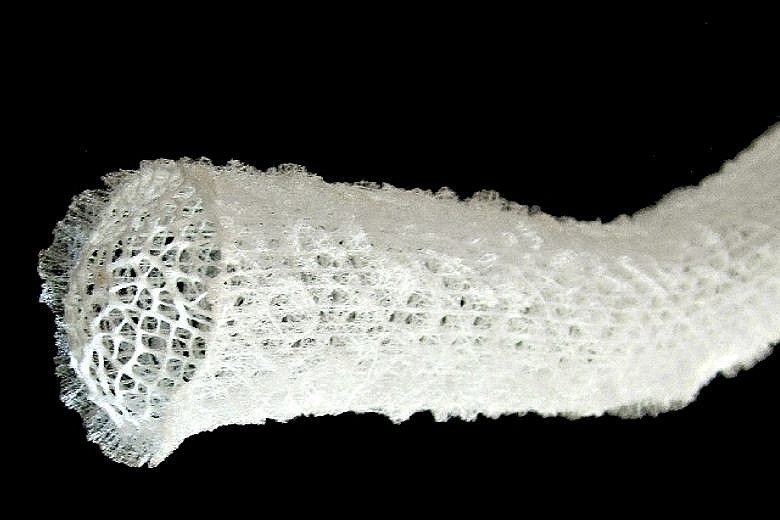 |
| Photo atlas obscura |
Like corals, sponges are constructed up of animal colonies and have a comparable long lifespan. The longest-living sponges on the planet are glass sponges. According to NOAA, members of this species are frequently discovered in the deep ocean and are named for their glass-like bones. A glass sponge of the species Monorhaphis chuni was thought to be roughly 11,000 years old, according to a 2012 study that appeared in the journal Chemical Geology. It's possible that some sponge species can survive even longer.
READ MORE: Lovely images of guilty baby elephant wins hearts
4. Black Coral: More Than 4,000 Years
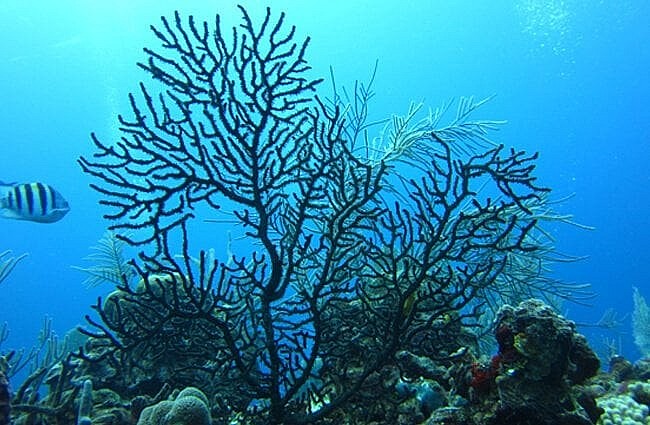 |
| Photo animals |
Corals resemble vibrant underwater rocks and plants, but they are actually formed of invertebrate polyps, which are exoskeletons. By repeatedly reproducing and replacing themselves by making a genetically identical replica, these polyps cause the coral exoskeleton structure to expand over time. The longevity of a coral is consequently more of a team effort because corals are composed of numerous identical individuals as opposed to being a single organism, like Greenland sharks or ocean quahog clams.
Even though corals can live for hundreds of years or longer, deep-water black corals (Leiopathes sp.) are among the species with the longest lifespans. Black coral samples discovered off the coast of Hawaii have been estimated to be 4,265 years old, according to a previous post by Live Science.
5. Greenland Shark: 300-500 Years
The Greenland shark lives deep in the Arctic Ocean belonging to the somnios family. The sharks grow about 0.5 to 1 cm a year and can grow up to 24 feet long and can live in water and the only shark that can tolerate Arctic temperatures year round with a temperature of 7 to -2 degrees. This is very strange since most sharks are thermophilic. The animal lives upto 100-200 years, which is the greatest indicator for sharks. The creature is not picky about food, it eats any living creatures. The maximum age of the Greenland shark that could be determined is 392 years. The studies were carried out using radiocarbon testing of the lens of the eye. The Greenland shark is probably the longest-lived vertebrate animal.
6. Ocean Quahogs (Clams): 200-500 Years
The ocean quahog (Arctica islandica) is a bivalve mollusk that can live for 200 years.13 A lifespan of 100 years is common, we know by measuring age marks formed in the quahog’s valves.
With a habitat that stretches from the east coast of North America to Iceland, the Shetland Islands, and Cadiz, Spain, the ocean quahog has a broad range. The filter feeders bury themselves in the ocean floor and live on microscopic algae.
READ MORE: Top 20 Weirdest and Rarest Animals In The World - In Danger of Extinction
7. Tubeworms: 300+ Years
These colorful deep-sea creatures are tube worms (Lamellibrachia luymesi) that have been known to live between 170 and 250 years.7 They live along hydrocarbon cold seep vents on the ocean floor.
The Lamellibrachia is unique among vent creatures because it grows slowly throughout the duration of its life to a length of six-plus feet. It occurs throughout the Atlantic Ocean, especially in shallow portions of the Gulf of Mexico basin.
8. Freshwater Pearl Mussel: 250+ Years Old
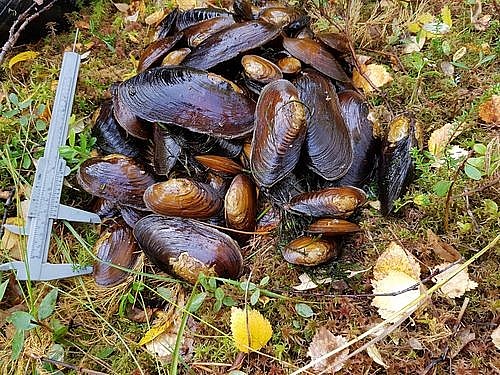 |
| Photo European Green Belt |
Bivalves called freshwater pearl mussels (Margaritifera margaritifera) filter food particles from the water. They are widespread in North America, including the U.S. and Canada, and mostly inhabit rivers and streams. The World Wildlife Fund claims that the oldest freshwater pearl mussel ever discovered was 280 years old (WWF). The slow metabolism of these invertebrates contributes to their extended lifespans.
Pearl mussels found in freshwater are a threatened species. The International Union for Conservation of Nature (IUCN) reports that their population is dropping as a result of a number of human-related issues, including harm and modifications to the river habitats they depend on (IUCN).
9. Bowhead Whale: More than 200 years old
Bowhead whales are the world’s longest-living mammals, with lifespans of over 200 years- making them a feature species on our top 10 longest living animals list.
This species is mostly found in the Arctic and is connected with ice floes. As a result, the melting and freezing of the ice has an impact on its movement patterns. Bowhead whales, with their big skulls and muscular bodies, can break through sea ice up to seven inches thick. Except for the front region of the lower jaw, which is white and noticeably upturned, adult bowheads are completely black.
They can grow up to 60 feet long and yet leap completely out of the water. Bowheads use baleen to filter their food by opening their lips and straining plankton from the surface, water column, or seafloor.
10. Rougheye Rockfish: 200 Years Old
Others, like the rougheye rockfish, have been known to live for almost 200 years.
The wide range of rockfish life spans provided ideal conditions for studying the genetics of longevity.
 What Is The US National Bird and Why is the Bald Eagle? What Is The US National Bird and Why is the Bald Eagle? Do you know what the national bird of the UA is? Read on the article to have insightful information about the US national bird. |
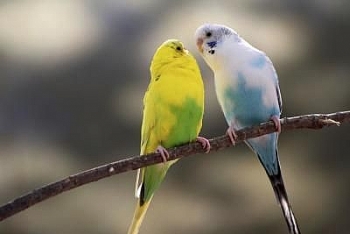 How to Take Care of Your Pet Birds How to Take Care of Your Pet Birds Birds are beautiful creatures. They are both entertaining and fun to play with - but at the same time allow you to 'get on with ... |
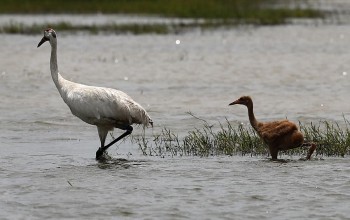 Facts About Whooping Cranes - Tallest and Rarest Birds In North America Facts About Whooping Cranes - Tallest and Rarest Birds In North America Whopping cranes were spotted for the first time this fall on Oct. 21 on Matagorda Island, making them the tallest and rarest birds in North ... |
























